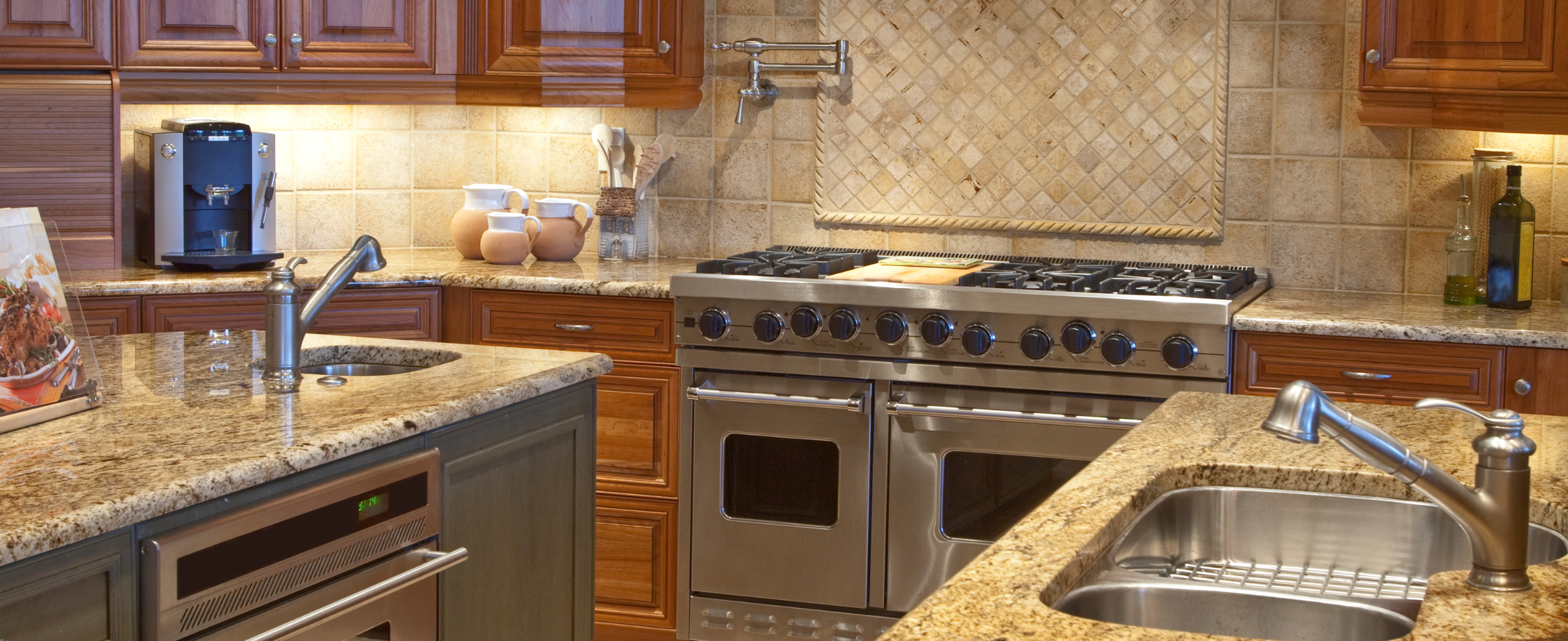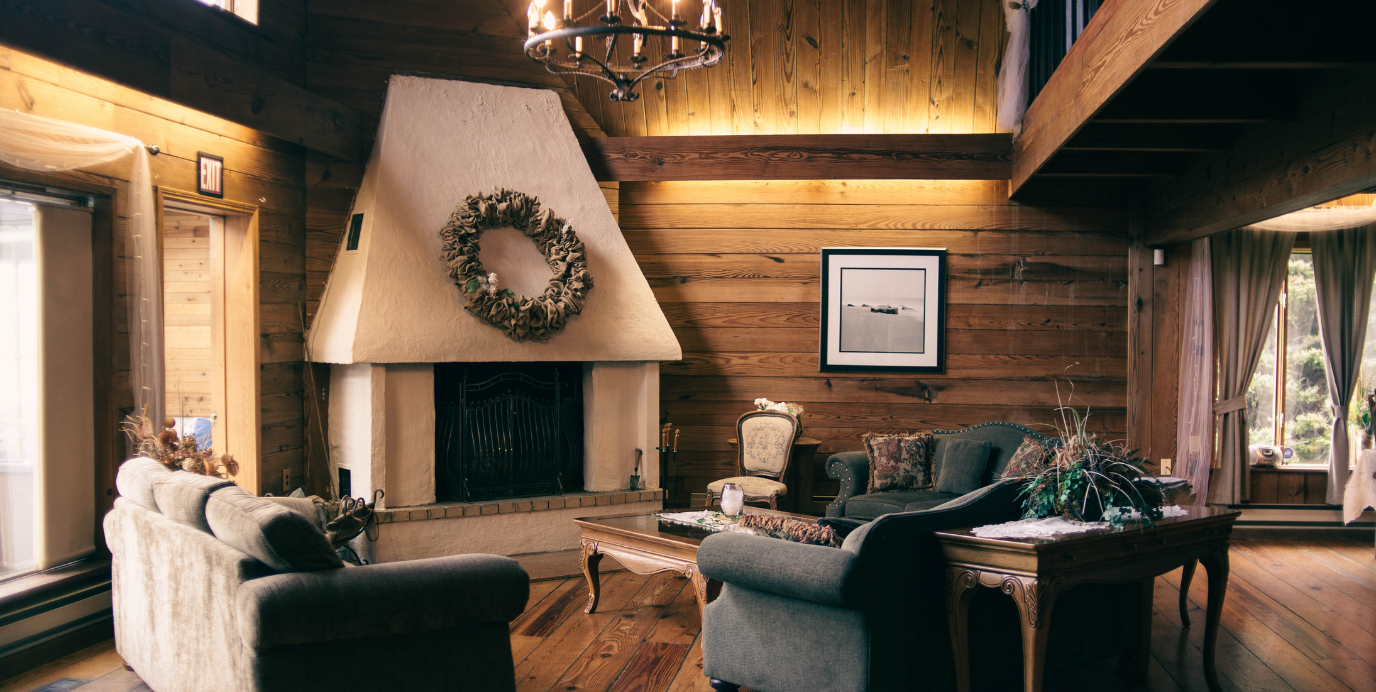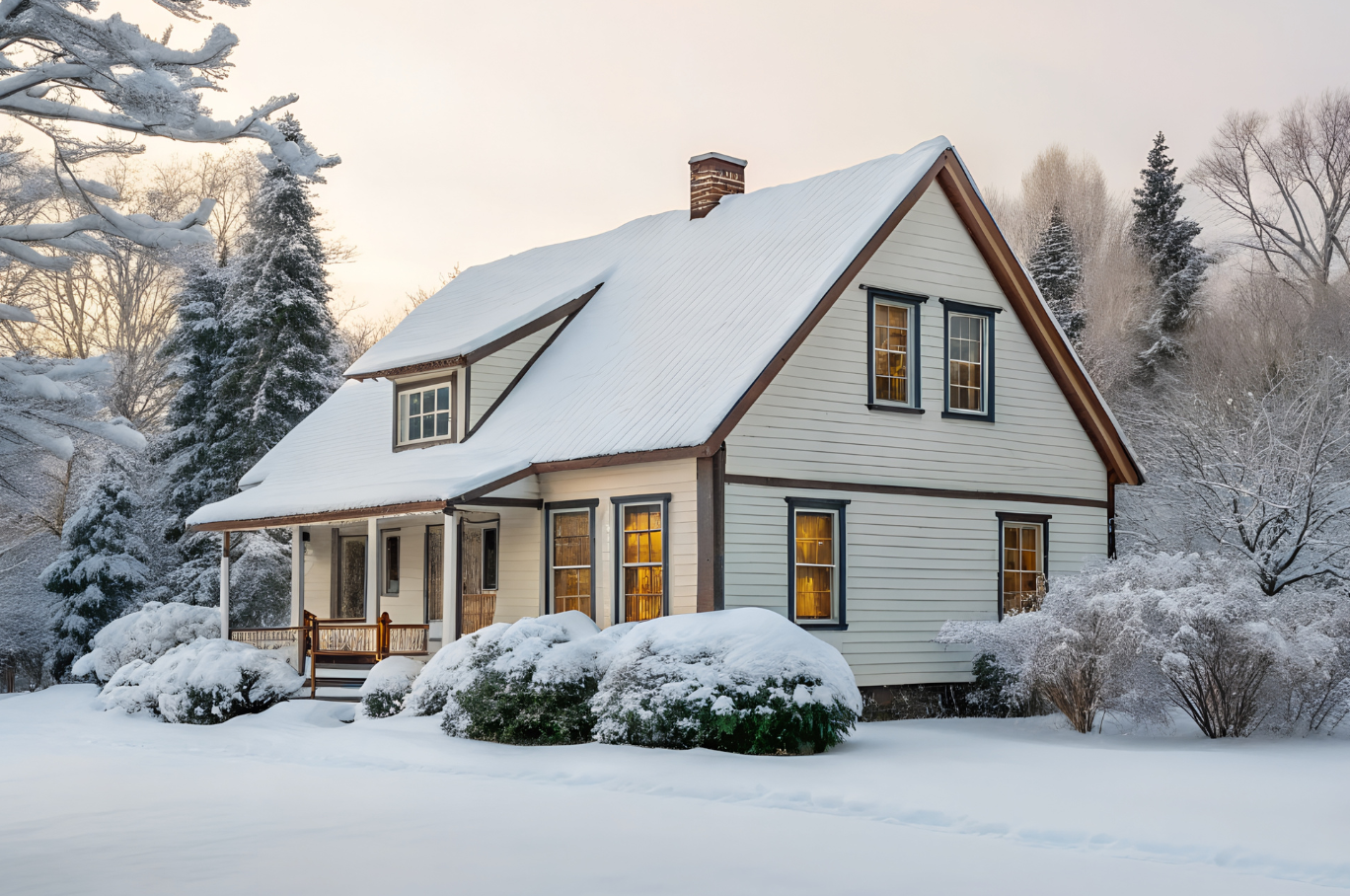
Tuscan-Style Kitchen Ideas for Connecticut Homes: Colors, Materials & Layout Tips
Tuscan kitchens feel sun-warmed, substantial, and welcoming, a mix of textured stone, time-softened wood, plastered curves, and aged metal accents. When translated thoughtfully for Connecticut homes, the style reads refined and livable, not heavy or theme-park. This guide covers color palettes, cabinetry, counters, tile, beams, hoods, lighting, layout, and storage, plus pro carpentry insights to scale details correctly for New England architecture.
From plaster-clad hoods and paneled beams to scribed cabinets and stone transitions, Carpentry & Handyman Concepts delivers clean, durable work, licensed & insured.
Get a free quote → Carpentry & Handyman Concepts.
The Tuscan Palette: Warm, Earthy, Timeless

Tuscan design is grounded in earth tones that age well.
- Neutrals: cream, sand, oatmeal, pale ochre, warm linen.
- Accents: terracotta, muted olive, soft rust, deep walnut.
- Metals: oil-rubbed bronze, aged brass, iron.
- Rule of Three: pick one foremost neutral, one wood tone, one metal, then repeat them consistently.
Paint Tip: Choose warm whites (with a hint of yellow/red, not blue) so stone and wood feel natural under Connecticut’s cooler daylight.
Cabinetry: Substantial, Simple, Hand-Finished
Tuscan kitchens don’t need ornate doors. What sells the look is heft, grain, and finish.
Door Styles
- Simple recessed panel or Shaker with eased edges.
- Inset or high-quality full overlay; keep profiles quiet so materials can speak for themselves.
Finishes
- Stain-grade walnut or white oak with a hand-wiped, low-sheen topcoat.
- Painted perimeter in creamy white + stained island/hutch gives warmth without darkening the room.
Details that Matter
- Furniture feet, paneled ends, and soft radius corners where cabinets meet plaster.
- Crown molding: choose a proportionate, classical profile; avoid oversized stacks in rooms with eight-foot ceilings.
Carpenter’s Note: We scribe panels to out-of-square walls, shim boxes to dead level, and cope crown for seamless, shadow-free lines, vital when pairing wood with stone or plaster.
Countertops: Stone-Look with Soul
Tuscan counters should feel honest and tactile.
- Marble or limestone (honed): Danby/Carrara tones work beautifully, expect patina.
- Quartz (marble-look): choose subtle veining to keep it old-world, not flashy.
- Edge profiles: eased, small ogee, or a chiseled/rocked edge on a furniture-style island.
Mix Strategy: Use stone/quartz on perimeters for durability, butcher block on a baking island for warmth and utility.
Backsplash & Walls: Texture Leads
Texture is the storyteller in Tuscan design.
- Tumbled travertine or honed limestone in brick or square set; keep grout soft and close in tone.
- Plaster or microcement walls for seamless, softly mottled surfaces.
- Feature zone behind the range: herringbone stone inset or arched plaster niche with a ledge for oils and salt.
Grout Tip: Choose a warm, low-contrast grout so the field reads like stonework rather than a grid.
Range Hood: The Tuscan Focal Point
Shapes & Cladding
- Plaster-clad hood with a gentle radius and a stone or wood trim band.
- Paneled wood hood echoing cabinet profiles (simplified, not baroque).
Proportion Rules
- Width: at least cooktop width; +3” each side looks grand without overpowering.
- Height: leave breathing room to the ceiling or carry the hood to the ceiling with a clean termination for Old World presence.
Installer’s Detail: We coordinate insert specs, ducting, and makeup air early, then build the shell with reveal lines that align to uppers and tiles.
Ceiling Beams: Rustic Without the Weight
Beams add age and rhythm, but need correct scale.
- Box beams over structural framing keep weight down and hide wiring.
- Species & finish: rift-sawn white oak or alder, hand-scraped with a warm, matte finish.
- Spacing: match room proportions (often 4.5’–6.5’ on center); stop beams at logical transitions or drop a subtle plaster beam to cap a run.
We set beam sizes so they complement ceiling height; oversized beams on 8’ ceilings make rooms feel squat.
Floors: Ground the Room
- Site-finished white oak with a natural/warm stain for continuity with the rest of the house.
- Stone or porcelain stone-look for Mediterranean authenticity in high-wear zones (mud entry, cooking run).
- Consider a brick herringbone accent in a butler’s pantry or mudroom threshold.
Hardware & Fixtures: Honest, Hand-Friendly
- Hardware: bin pulls and simple knobs in oil-rubbed bronze or antique brass, or lean iron for a rustic edge.
- Faucets: bridge or high-arc pull-down in warm metal finishes; add filtered water or pot filler for function.
- Sinks: fireclay apron for the icon, a large undermount for a subtler Tuscan; both read right with stone and wood.
Lighting: Warm Layers, Soft Shadows
- Ambient: low-glare recessed or classic flush mounts with linen diffusers.
- Task: continuous under-cabinet LED strips at 2700–3000K, warmth matters.
- Accent: iron or aged brass pendants, small picture lights over a hutch, and toe-kick LEDs for a floating night glow.
- Dimming & scenes: Prep / Dinner / Late Night keep the room flexible.
Layout & Storage: Old World Look, Modern Function
Tuscan kitchens are social and practical.
Flow
- Keep a comfortable 42”–48” aisle between the island and perimeter.
- If space is tight, choose a peninsula to maintain seating and sightlines.
Storage
- Full-height pantry with roll-outs for dry goods and small appliances.
- Deep drawers for pots; tray dividers near ovens; spice pullouts flanking the range.
- Appliance hutch with pocket/bifold doors, espresso, toaster, and mixer disappear when not in use.
- Open shelves (thicker 1¼”–1½”) for everyday ceramics; mount with hidden steel brackets to prevent sag.
Built-Ins that Sell the Look: a glass-door hutch with interior lighting; a shallow breakfront between kitchen and dining; a plate rack inset for character.
Balancing Act: Old World Warmth, New England Bones
Connecticut architecture tends to be cleaner and more symmetrical than rustic Italian villas. Respect that:
- Use stone and plaster on focal zones, not every surface.
- Keep profiles restrained; let texture carry the style.
- Maintain symmetry around windows/hoods where possible for a New England-friendly read.
Connecticut-Specific Installation Notes
- Out-of-square walls/ceilings: we scribe tall panels, end panels, and hood plaster lines to keep shadows tight.
- Seasonal movement: allow for expansion in long wood runs and beam boxes.
- Stone transitions: plan thresholds and Schluter/stone edges where wood meets tile to avoid trip points.
- Permits & venting: hood CFM and makeup air may require coordination with your GC and local inspectors.
These details make a Tuscan kitchen feel quiet and intentional. We size, scribe, and finish so every seam looks meant to be.
Talk custom detailing → Carpentry & Handyman Concepts.
Budgeting & Phasing (Smart Roadmap)
- Cabinetry & Hood Concept: lock door style, finish, and hood shape early.
- Counters & Backsplash: honed stone or stone-look slabs + tumbled/limestone field tile.
- Beams & Trim: scale beams, crown, and paneling after mechanicals are set.
- Lighting & Metals: select pendants, hardware, and faucet finish as one coordinated family.
- Built-Ins: hutch/breakfront, appliance garage, and niche shelves complete the room.
Common Mistakes (and Easy Fixes)
- Over-decorating with faux grape motifs—use real materials and restraint.
- Too dark everywhere—balance stained wood with creamy paint and light stone.
- Tiny tiles with high-contrast grout—choose larger stone pieces and warm, close-toned grout.
- Overscaled beams in low rooms—right-size the boxes and lighten the stain.
- Glossy finishes that fight texture—use matte/satin on cabinets and stone.
- Mismatched metals—pick one hero finish, one supporting accent at most.
- No under-cabinet light—stone and wood need a warm task light to shine.
Quick Specs (Tuscan Edition)
- Aisles: 42”–48”
- Island seating overhang: 12”–14”
- Upper cabinet height: 36”–42”; take to ceiling with crown or a plaster return
- Toe-kick height: ~4”–4.5”
- Beam boxes: size to ceiling height (often 5”–7” depth on 8’–9’ ceilings)
- Under-cab LEDs: 2700–3000K continuous strips
- Hood width: cooktop width to +6” total
Real-World Upgrade Ideas
- Plaster-clad hood with a stone trim band, soft curves, and a strong focal point.
- Beam-wrapped ceiling with concealed wiring for pendants, clean installs, no conduit glare.
- Hutch with glass uppers + interior lighting for ceramics and glass, instant “collected” look.
- Stone-to-wood threshold with a shallow bevel, trip-safe, and elegant.
Our Process (Fast, Clean, Professional)
- Free Quote & Guidance: Share inspiration, photos, and measurements, and we’ll map a Tuscan look that fits your home.
- Site Measure & Plan: We finalize cabinet specs, hood geometry, beam sizes, tile layout, and lighting runs.
- Build & Install: Scribed panels, crisp reveals, clean stone edges, and warm-lighting integration.
- Walkthrough & Touch-Ups: We fine-tune doors, dimmer scenes, caulk/paint, and stone sealing.
FAQ
Do I need heavy ornamentation for a Tuscan look?
No. Focus on texture (stone/plaster), warm wood, and aged metals. Clean profiles feel more authentic in CT homes.
Is honed marble too fussy?
It patinas, which suits the Tuscan style. Prefer low-maintenance? Use subtle marble-look quartz with a honed finish.
Can I get the look in a smaller kitchen?
Yes, use a peninsula, choose lighter stones/paints, and scale beams/hood to the room.
What if my ceilings are low?
Keep beams shallower, use a slimmer crown, and consider a taller, narrower hood that carries to the ceiling for vertical lift.
The Bottom Line
A Tuscan kitchen in Connecticut should feel warm, substantial, and quietly elegant. Get the palette right, let texture lead, and scale beams, hood, and trim to your home. When you pair thoughtful design with precise carpentry, the room feels like it’s always belonged there, comfortable today and richer tomorrow.
Call us today to get a free quote: Carpentry & Handyman Concepts.
Start Planning Your Project With A Free Quote!
Book Your Free EstimateRead our latest blog
Flexible Financing With Klarna
We’ve partnered with Klarna to make your next project stress-free. Split your payments into easy installments, enjoy transparent pricing, and get the home upgrades you need now, without waiting.
.png)
.png)
.png)

